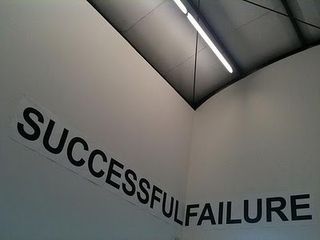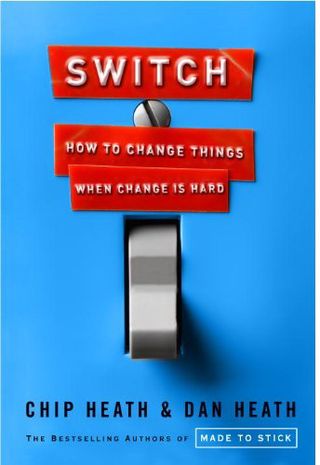As I mentioned in the last blog, I am excited about this edition. (You'll see why in the "Build Habits" section below…) In the first two editions of this series (1,2), I introduced you to a well-constructed book by the Heath brothers entitled, "Switch: How To Change Things When Change Is Hard."
The authors consolidate a lot of information about the major elements of change, including how to create change, in their very concise, easy to read book. The brothers liberally borrow their basic analogy around the elements of change from Psychologist and Researcher, Dr. Jonathan Haidt. They explain that change involves two parts of the whole person that we are all familiar with….a person's emotional side, as well as their brain's rational side.
As I mentioned before, to create change, you must impact both sides. The overpowering emotional side is identified as the "Elephant," and the rational, decision-making component sits atop the Elephant as the "Rider." When conflict arises between the two, the Rider is easily the underdog. (I addressed "the Rider" and "the Elephant" in the first two editions.)
Lastly, to create change, you must provide and shape a clear PATH. This means that you must provide clear direction. Sometimes change doesn't require anything we've described so far. Sometimes, it only requires providing a path that's clear, accessible, habitual and inherent in the culture. We all occasionally entertain the lazy habit of blaming character rather than environment when it comes to groups of individuals who may not be performing in the way we envision necessary. However, the following are ways that you can begin to make change easier.
Tweak the Environment. Did you know that the airline industry has a "sterile cockpit" rule that applies to any commercial plane flying below 10,000 feet? Apparently, the most accident-prone time is while a flight is either ascending or descending. Conversations that are not flight-related are not permitted at this time.
Similarly, the authors describe an IT group that had been unsuccessfully grappling with continually taking far too long in developing new products. They set out to reduce new product development from three years to eight months. They decided to adopt the sterile cockpit rule for new projects, establishing "quiet hours" on Tuesday, Thursday and Friday mornings, before noon. Making this simple tweak of the environment provided coders ample time to concentrate on complex bits of code without being interrupted, which turned out was the major culprit to slowing progress. Ultimately, the group achieved a nine-month development cycle. Not too shabby for a simple fix. This result reinforces the idea that what can appear as a people problem, is often a situational challenge. We all have a tendency to minimize, or ignore all together, the fact that situational forces can greatly influence and shape peoples' behavior. And often, just simple tweaks of the path can produce dramatic behavioral changes that we wouldn't otherwise expect.
Build Habits. When one has a habit, one has a sort of behavioral auto-pilot. Habits allow behavior to happen without taxing the rider or the elephant…Both are simply doing what they always do. Once habits are built, little energy is expended. There are several examples in the book that address companies helping their people develop habits. Your office/company can either help reinforce or deter successful habits. Paying attention to your power to do so, is vital.
To change anything, you must build habits. One way to help build habits is to set up "action triggers." Action triggers are behaviors that are always followed by the habit you want to build. For example, every Monday, Wednesday and Friday for the past 25 years, I have gone to the gym to work out. This is such a strong habit that I don't ever even consider placing something else in that time slot. These specific days/times of the week pre-load a decision to work out, and therefore prevent the Rider from scheduling over them. Setting up action triggers have been proven to TRIPLE the chance of successful goal completion.
So, while helping build your agents' business plan, ask them to specify exactly when they will perform each activity. Don't take a given time for granted…Instead ask, "After what activity will you do this? After brushing your teeth? After dropping off your children at school?" Etc. The authors offer several great examples of how you, as a leader, can help others to create habits and even "instant habits" through action triggers.
The authors then spend considerable time discussing the MAGIC, underrated, and sometimes despised tool…The Checklist!
Bear with me, and read further… This simple tool can make or break your company's success. Dr. Peter Pronovost of Johns Hopkins, was fed up with the finacial waste and human loss attributed to preventable line infections occurring in the Intensive Care Unit (ICU). So, he finally resorted to demanding that all staff take the time to check off a simple checklist of routine, required tasks. It was a five-part checklist, containing items like, (1) Wash hands, (2) Clean skin with antiseptic, and so on… No new activities were added, rather, the expected routine was simply itemized out.
Eighteen months after the checklist was put into place by Johns Hopkins and some Michigan hospitals, $175 million dollars and 1500 lives had been saved. "Check lists are insurance against over confidence." I love that sentence. Print it out in bold letters and paste to your office door. If you think a checklist is for boring, menial jobs, then try your luck flying a 747. I can tell you, first hand, that the majority of recruiting efforts put forth by most real estate companies, involve completely flying by the seat of their pants. They not only don't have a checklist, but wouldn't know what items to place on their checklist if they were asked to create one. If you are a client of ours, then you know that we have built-in checklists (literally thousands daily – between our clients and us) that ensure that the best sourcing and the best recruiting can be accomplished.
The last way to change the clear the path is to Rally the Herd. There is no scientific fact more etched in granite than peoples' tendency to follow the lead of people in their immediate environment. This is another reason to make sure you churn out agents who stand around the water cooler too much and never produce. If 90% of your agents are working, most of the others will follow their lead. Find ways to instill a sense that "this is the way we do it here" and ensure that it's in fact done that way. Lead an Elephant on an unfamiliar path, and it's likely to follow the herd…
The authors acknowledge that change isn't always easy. But the evidence suggests that when change works, it tends to follow a predictable pattern. Visit the authors at http://www.heathbrothers.com.
Editor's Note: This article was written by Dr. David Mashburn. Dave is a Clinical and Consulting Psychologist, a Partner at Tidemark, Inc. and a regular contributor to WorkPuzzle. Comments or questions are welcome. If you're an email subscriber, reply to this WorkPuzzle email. If you read the blog directly from the web, you can click the "comments" link below.













